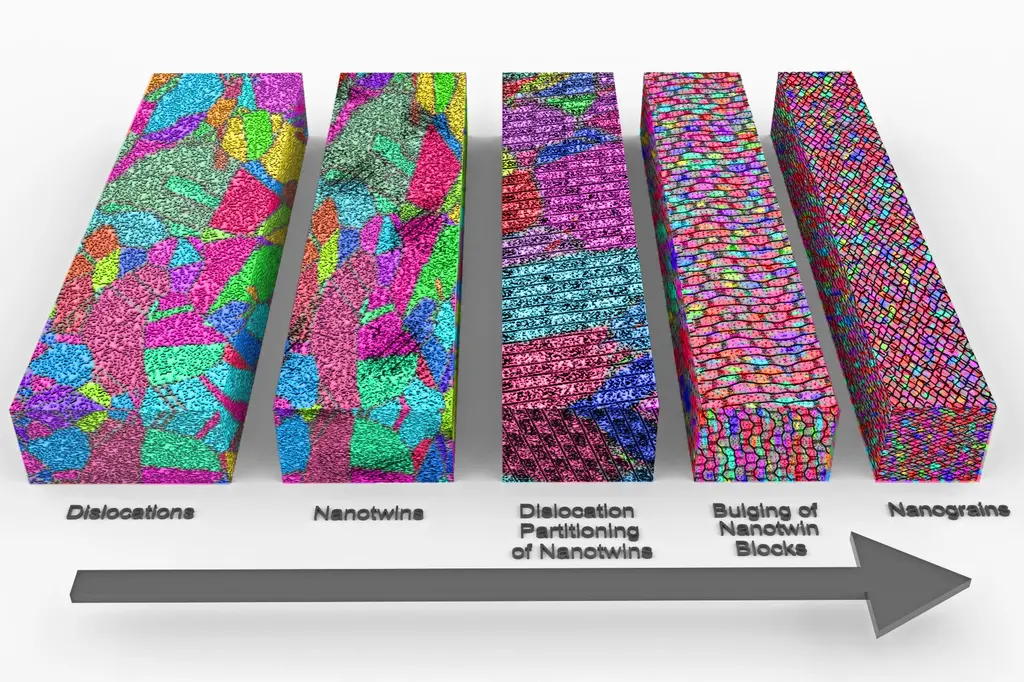How will the tiny grains of metal change in the process of extreme deformation? MIT researchers have explored the secret behind this, which could lead to ways to produce lighter, harder and stronger versions of metals such as steel, aluminum, titanium and alloys.

There are many ways to shape metals into specific shapes for various purposes, including casting, processing, forging and rolling. These processes affect the size and shape of the tiny grains that make up bulk metals, whether steel, aluminum, titanium, or other widely used metals and alloys.
MIT researchers have now been able to accurately analyze what happens when these grains form during extreme deformation. These grains have a minimum diameter of a few nanometers on the smallest scale. New findings may lead to improved processing methods to produce better and more consistent properties, such as hardness and toughness.
These new discoveries are realized through the detailed analysis of the images of a powerful imaging system, and the relevant results are published in nature materials. The author is Ahmed tiamiyu, a former postdoctoral at MIT (now an assistant professor at the University of Calgary); MIT professors Christopher Schuh, Keith Nelson and James Lebeau; Former student Edward Pang; And current student Xi Chen.
"In the process of making a metal, you are giving it a structure that will determine its characteristics in use. Generally speaking, the smaller the grain size, the stronger the metal produced. Efforts to improve strength and toughness by reducing the grain size have been the primary theme of all metallurgy and all metals for the past 80 years," Schuh said.
For the first time, researchers have described how the tiny grains that make up most solid metals form. Understanding this process could theoretically provide a way to produce stronger and lighter versions of widely used metals such as aluminum, steel and titanium, they said.
Metallurgists have long applied various empirically developed methods to reduce the grain size in a solid metal, usually by deforming it in one way or another to produce various strains. But it is not easy to make these grains smaller.
The main method is called recrystallization, in which the metal is deformed and heated. This has produced many small defects in the whole work, which Schuh said are "highly disordered and everywhere".
"When the metal is deformed and heated, all these defects can spontaneously form new crystal nuclei. You go from this chaotic defect soup to fresh new crystal nuclei. Because they are newly formed crystal nuclei, they start very small, resulting in much smaller grains in the structure," Schuh said.
He said the new work is unique in determining how the process occurs at very high speeds and on the smallest scale. Typical metal forming processes, such as forging or rolling, can be quite fast, and this new analysis focuses on "orders of magnitude faster" processes.